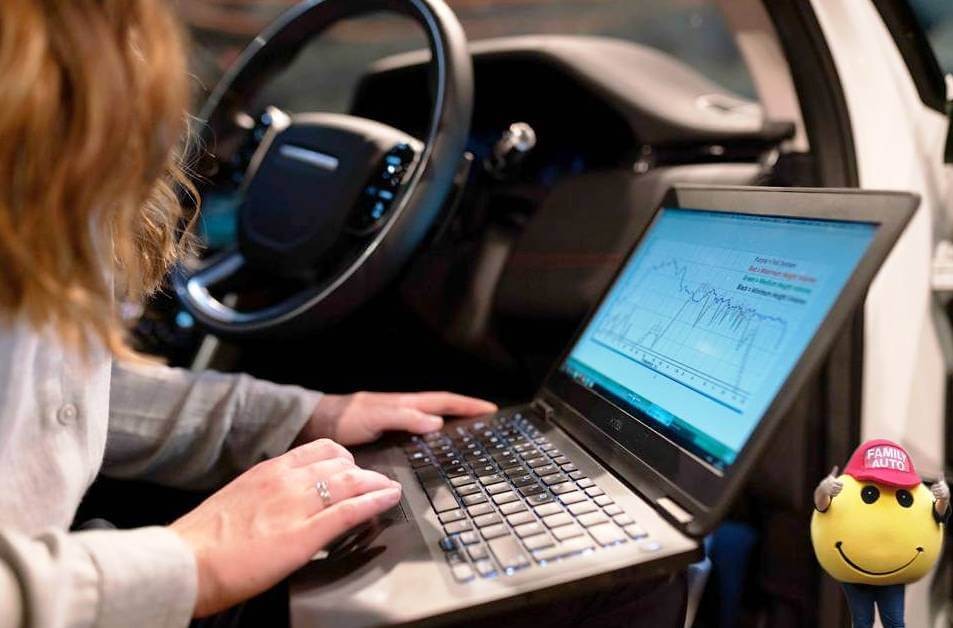 Close-up of a modern car infotainment system touchscreen displaying navigation, media, and vehicle settings, illustrating the complexity of automotive software programming.
Close-up of a modern car infotainment system touchscreen displaying navigation, media, and vehicle settings, illustrating the complexity of automotive software programming.
Car infotainment systems, once simple radios, have evolved into sophisticated hubs controlling everything from navigation and media to vehicle settings and connectivity. It’s easy to get frustrated when these systems lag or malfunction, forgetting the immense complexity under the surface. Consider the Chevrolet Volt, whose infotainment system operates on over 10 million lines of code daily – significantly more than a cutting-edge F-35 fighter jet. This illustrates the intricate software engineering involved. As customer expectations rise in this digital age, automakers are racing to enhance these systems, partnering with tech giants like Microsoft, Google, and Apple. We’re moving towards an era of intelligent vehicles where infotainment systems will proactively anticipate our needs, offering features like automatic navigation to favorite stores and advanced autonomous driving functionalities. But what powers these increasingly capable systems? Let’s explore the software architecture and programming that bring car infotainment systems to life.
Decoding the Software Layers of Car Infotainment
A typical car infotainment system is built upon a layered architecture, usually comprising five key levels. Starting with the user-facing elements and moving deeper into the system’s core, these layers work in concert to deliver the features we interact with daily.
The User Interface (UI) – The Face of the System
The user interface is what you see and interact with – the touchscreen, buttons, and visual displays. It’s programmed to be intuitive and responsive, translating user inputs into commands the system can understand. Programming languages for the UI often include C++ and Qt, a cross-platform application development framework widely used in the automotive industry for its performance and flexibility in creating graphical user interfaces. JavaScript and HTML5 may also be employed for web-based interfaces or certain application components within the system.
Application Framework – The Orchestrator
Beneath the UI lies the application framework, acting as the system’s manager. This layer is responsible for handling user commands received from the UI, allocating system resources, and launching and managing applications. It determines which apps run, when they run, and how they interact. This layer is often programmed in Java or C++ due to their robustness and ability to manage complex application lifecycles. Real-time operating systems (RTOS) are crucial here to ensure timely responses and system stability.
Mobile Integration – Bridging Devices
The mobile integration layer enables seamless connectivity between your smartphone and the car’s infotainment system. Technologies like Apple CarPlay and Android Auto rely on this layer to extend smartphone functionalities to the car’s screen. This involves intricate programming to handle various communication protocols such as Bluetooth, Wi-Fi, and USB. Languages and technologies used here include C, C++, and Java, along with specialized libraries and APIs provided by mobile operating systems and automotive connectivity standards.
Operating System (OS) – The Core Foundation
The operating system is the fundamental software that manages the entire infotainment system’s hardware and software resources. It’s the “glue” holding all layers together, enabling operations and controlling hardware access. Common operating systems in car infotainment include Linux, often customized for automotive applications (e.g., AGL – Automotive Grade Linux), and QNX, a real-time OS known for its reliability and security in critical systems. These OSes are primarily programmed in C and C++ for performance and low-level hardware interaction. Increasingly, Android Automotive OS, a full-stack, open-source OS, is gaining traction, programmed using Java, Kotlin, and C++.
Hardware Interaction – Connecting to the Physical World
The hardware layer comprises the physical components – the touchscreen, RAM, processors, sensors (like tire pressure monitors and cameras), and the car’s head unit itself. Software interacts with this hardware to gather data and execute functions. This interaction is managed through device drivers, often written in C and C++, which act as intermediaries between the OS and the hardware. These drivers are crucial for enabling the software to control and receive data from physical components like cameras, sensors, and audio systems.
In essence, when you interact with the infotainment system, your command travels through these layers, from the UI down to the hardware and back up again. This entire process, involving millions of lines of code and intricate software interactions, occurs in milliseconds, allowing for simultaneous execution of numerous tasks.
Programming Languages Powering Your Drive
To directly answer “What Are Car Infotainment Systems Programmed In?”, the primary programming languages are C and C++. These languages are favored for their performance, control over hardware, and suitability for real-time and embedded systems, which are crucial in automotive applications. Java is also significant, particularly for application frameworks and Android-based systems. More recently, Kotlin is emerging as a modern language for Android Automotive development. JavaScript and HTML5 play roles in UI development, especially for web-based components. Assembly language might be used for highly optimized, low-level hardware interactions in specific scenarios, though less common for the main infotainment system code.
The Future of Infotainment Programming
The future of car infotainment is software-driven and increasingly connected. We can expect even deeper smartphone integration, remote vehicle control, and seamless access to cloud services and social media directly from our cars. Automakers are collaborating with tech companies to develop programs that enable vehicle-to-vehicle communication for improved traffic management and autonomous driving features. For electric and hybrid vehicles, the infotainment system will play a critical role in energy management and efficient operation.
Diversification, connectivity, electrification, and autonomy are the key trends shaping the future of infotainment systems. As processing power increases and chip technology advances, slow and clunky interfaces will become a thing of the past. We are moving towards a highly customized and intelligent driving experience powered by increasingly sophisticated software, promising a future where the layers beneath the screen become even more complex and capable.